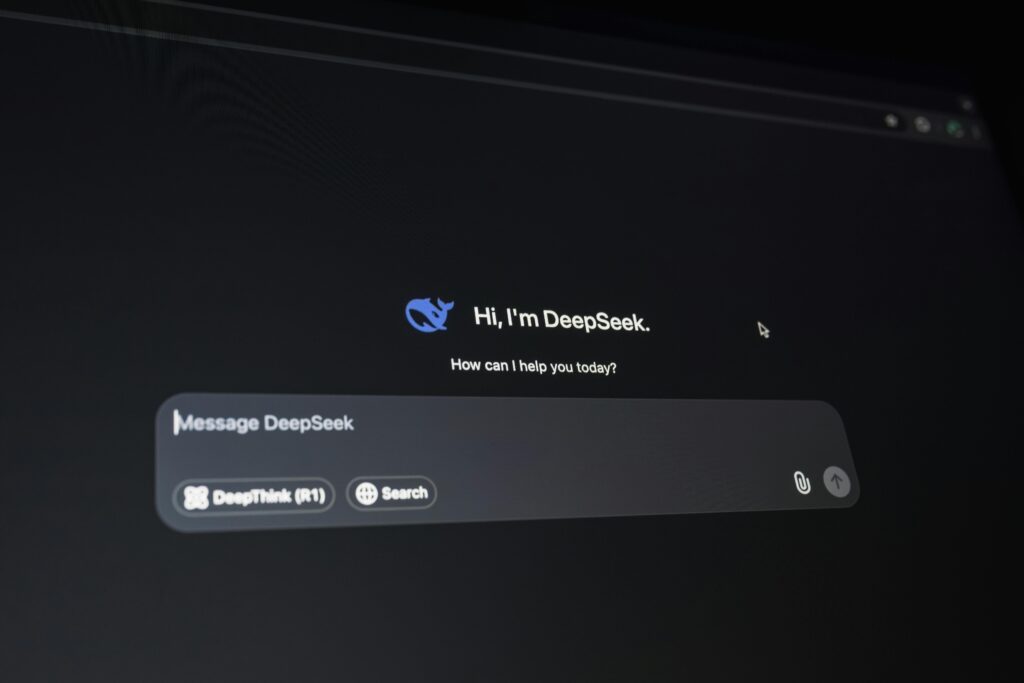The artificial intelligence landscape experienced a seismic shift on January 27, 2025, when Chinese startup DeepSeek technology sparked the largest single-day market value loss in U.S. stock market history. The company’s breakthrough AI models sent shockwaves through global financial markets, challenging fundamental assumptions about AI development costs and American technological supremacy.

The DeepSeek Technology Revolution
Founded in May 2023 by Liang Wenfeng, creator of hedge fund High-Flyer, DeepSeek emerged from relative obscurity to become a major disruptor in the AI sector. The Hangzhou-based startup made headlines with two groundbreaking AI models: DeepSeek-V3 and DeepSeek-R1, both of which reportedly match or exceed the performance of leading American models while operating at dramatically lower costs.
The company’s most significant achievement lies in its cost efficiency. DeepSeek claimed its R1 model was developed in just two months for under $6 million in computing resources, a fraction of the billions invested by U.S. tech giants like OpenAI, Meta, and Google. This represents a cost reduction of 20 to 50 times compared to OpenAI’s o1 model, depending on the specific application.
Market Impact and Financial Carnage
The market reaction was swift and brutal. Nvidia, the world’s leading AI chip manufacturer, experienced the largest single-day market capitalization loss in history, shedding nearly $600 billion in value as its stock plummeted 17%. The broader tech sector wasn’t spared, with the Nasdaq Composite dropping 3.07% and the S&P 500 falling nearly 1.5%.
Other major tech companies also suffered significant losses. Broadcom fell 17%, Oracle dropped 14%, while Microsoft and Alphabet saw their shares decline substantially. The Philadelphia Semiconductor Index tumbled 9.2%, marking its steepest drop since March 2020.
The market disruption extended beyond U.S. borders, affecting AI-related stocks worldwide. European semiconductor companies like ASML also experienced significant declines as investors grappled with the implications of China’s AI breakthrough.
Technical Innovations Behind the Success
DeepSeek’s achievements stem from several key technological innovations that challenge conventional AI development wisdom. The company’s DeepSeek-V3 model utilizes a Mixture-of-Experts (MoE) architecture with 671 billion total parameters, but only activates 37 billion parameters per token, significantly improving computational efficiency.
The model incorporates advanced features including Multi-head Latent Attention (MLA) for enhanced text analysis and Multi-Token Prediction for faster inference processing. Perhaps most importantly, DeepSeek achieved these results using older, less sophisticated Nvidia H800 chips rather than the latest generation hardware typically required for frontier AI models.
DeepSeek’s training methodology also proved revolutionary. The company utilized approximately 2,000 Nvidia H800 GPUs and invested less than 2.788 million GPU hours for full training, demonstrating that advanced AI models don’t necessarily require the massive computational resources previously thought essential.
Performance Benchmarks and Capabilities
Independent evaluations revealed that DeepSeek’s models perform competitively against industry leaders. The DeepSeek-R1 model achieved a 79.8% success rate on the AIME 2024 mathematics benchmark, slightly surpassing OpenAI’s o1 model at 79.2%. In coding challenges, both models performed comparably, with OpenAI maintaining a slight edge at 96.6% versus DeepSeek’s 96.3% on Codeforces.
The R1 model currently ranks second only to OpenAI’s o1 in independent AI performance evaluations, while outperforming models from Google, Meta, and Anthropic. This performance parity, combined with drastically lower costs, fundamentally challenges the prevailing economics of AI development.
Open Source Strategy and Global Impact
Unlike proprietary models from American companies, DeepSeek chose an open-source approach, making its models freely available for study, modification, and deployment. This strategy democratizes access to frontier AI capabilities, enabling smaller companies and researchers worldwide to benefit from advanced AI without massive financial investments.
The open-source nature of DeepSeek’s models has particularly significant implications for the Global South and resource-constrained regions, where the reduced costs could accelerate AI adoption. This accessibility could reshape the global AI landscape by enabling a broader range of players to participate in AI development and deployment.
Geopolitical Implications and U.S. Response
DeepSeek’s success has profound implications for U.S. technology policy and export controls. The company’s ability to develop competitive AI models using restricted hardware raises questions about the effectiveness of American semiconductor export restrictions designed to limit China’s AI capabilities.
President Donald Trump called DeepSeek’s emergence a “wake-up call” for American tech companies, while the National Security Council began reviewing the company’s data handling practices. Several U.S. lawmakers introduced the “No DeepSeek on Government Devices Act” to restrict its use within federal agencies.
The breakthrough suggests that either the most advanced chips aren’t necessary for creating high-performing AI models, or that Chinese companies can still acquire sufficient quantities of restricted hardware, potentially through shell companies in Southeast Asia.
Industry Response and Long-term Implications
The emergence of DeepSeek has forced a fundamental reassessment of AI development paradigms. Marc Andreessen, the prominent venture capitalist, dubbed the launch “AI’s Sputnik moment,” highlighting its potential to reshape the entire industry.
The cost efficiency demonstrated by DeepSeek could commoditize large language models, potentially shifting investment focus from infrastructure to application-layer development. This transformation might accelerate AI adoption across industries while reducing barriers to entry for new market participants.
For enterprise applications, DeepSeek’s breakthrough enables real-time, adaptive AI systems that were previously prohibitively expensive. Financial services, healthcare, and manufacturing sectors could now deploy sophisticated AI-driven solutions at a fraction of traditional costs.
Challenges and Limitations
Despite its technical achievements, DeepSeek faces several challenges. The company’s models exhibit censorship on sensitive topics related to China, avoiding discussions about Taiwan and the 1989 Tiananmen Square incident. Additionally, the company temporarily suspended new user registrations due to what it described as “large-scale malicious attacks” on its services.
Questions also remain about the true costs of DeepSeek’s development. Some AI specialists suggest the actual training expenses may have been higher than reported, though still significantly lower than traditional approaches.
Market Recovery and Future Outlook
Following the initial shock, financial markets have shown signs of stabilization. Analysts suggest that while DeepSeek represents a genuine breakthrough, the broader AI investment cycle remains in its early stages. The disruption may actually accelerate AI adoption by reducing costs and increasing accessibility.
The emergence of DeepSeek signals a structural shift in the AI economy with far-reaching consequences for investment strategies, regulatory landscapes, and global competitiveness. As the technology continues to evolve, the implications of China’s AI breakthrough will likely reshape the global technology landscape for years to come.
The DeepSeek phenomenon demonstrates that innovation in AI development isn’t solely dependent on massive financial resources or the most advanced hardware. Instead, it highlights the importance of algorithmic efficiency, architectural innovation, and strategic optimization – lessons that will undoubtedly influence the future direction of artificial intelligence research and development worldwide.
